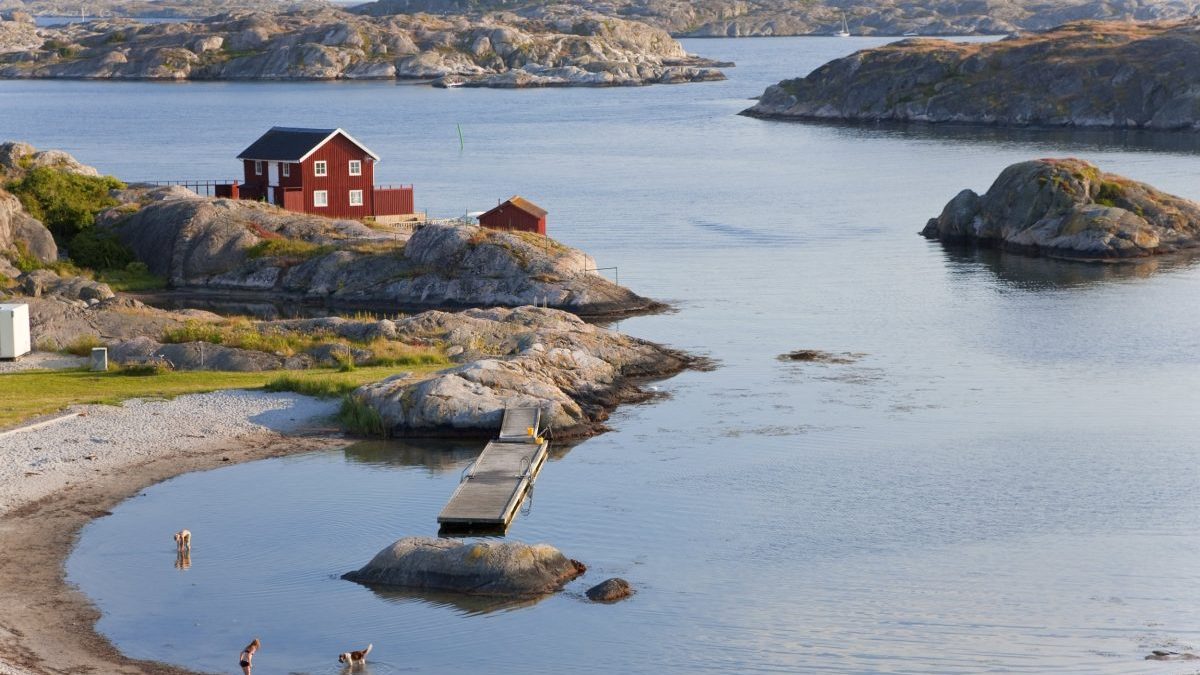At the height of summer, some of the best-known isles are overcrowded and overpriced – but lesser-known ones have just as much to offer
With Greece’s popular islands at their peak in summer, there are many more archipelagoes to explore, from tranquil lake clusters to Nordic and mid-Atlantic wonders.
Making you feel like you’re having several holidays in one, island-hopping trips can be addictive. Yet, at the height of summer, some of the best-known isles are overcrowded and overpriced.
The average cost of a summer rental in Mykonos has reached €750 (£649) a night, according to rental analytics company AirDna, while starting prices for a seven-day Greek islands sailing trip with a major cruise line range from £1,200-£4,900 in August.
Here, we spotlight eight off-the-radar destinations, where you can archipelago crawl away from the masses…
South Funen Archipelago, Denmark
More than 400 islands leopard-print the waters around Denmark’s mainland. Yet online travel agent loveholidays reports that 98 per cent of its holiday bookings to the country by UK travellers are for Copenhagen, which rests on Zealand, the largest isle.
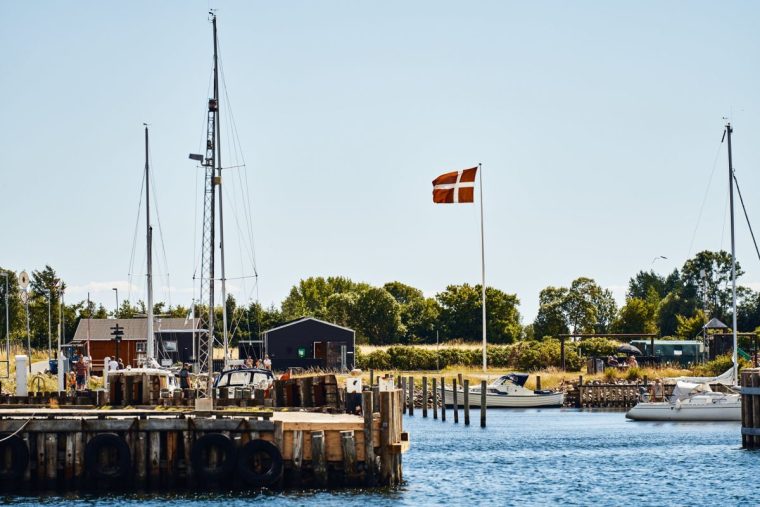 Skaro island in the South Funen Archipelago (Photo: Kasper Orthmann Andersen/Visit Fyn)
Skaro island in the South Funen Archipelago (Photo: Kasper Orthmann Andersen/Visit Fyn)
Attracting less than 1 per cent of those bookings, Odense, on neighbouring Funen, is a launch pad for both ferry- and sail-based island-hopping adventures around the South Funen Archipelago. Described by Unesco as having some of the best sailing waters in the world, the islands are lassoed by beaches, scored by nature trails and spotted with dinky villages of half-timbered houses.
Skarø is known for its birch-sweetened ice cream, Drejø for its white fallow deer, Hjortø for its 100 species of birdlife, and Bjørn for its dunes.
Direct trains run from Copenhagen to Odense. From there, you can connect to medieval Nyborg for chartered sailing trips or to the ferry ports of Svendborg (for Skarø, Drejø, and Hjortø) and Faaborg (for Bjørnø, Lyø and Avernakø). Many of the inhabited islands have camping shelters that are either free or cost less than £6 a night (see bookenshelter.dk).
Venture Sail has a six-night full-board sailing tour from Nyborg, on board the restored 1906 tall ship Aron, from £1,390pp – around £400 cheaper than starting prices for a seven-night tall ship cruise around the southern Cyclades this August.
Ria Formosa, Portugal 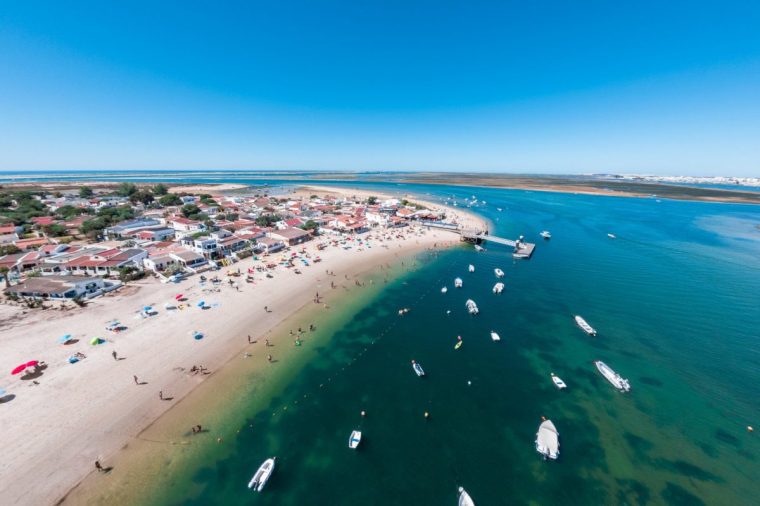 Boats of the coast of Armona island (Photo: Eulalia Cayuela Martinez/Getty/iStockphoto/joseyyoestudio)
Boats of the coast of Armona island (Photo: Eulalia Cayuela Martinez/Getty/iStockphoto/joseyyoestudio)
Just off the coast of busy Faro, the Ria Formosa lagoon is where the Algarve takes time out. The archipelago has five main islands, which are protected as part of a 69 sq mile national park and regularly listed as one of the seven natural wonders of Portugal.
On uninhabited Deserta (also known as Barreta), Ilha de Tavira and Cabanas de Tavira, runways of pastel de nata-coloured sand go uninterrupted for miles, save for an occasional boardwalk or solar-powered restaurant.
Ilha da Armona is a small fishing village with a few tavernas surrounding the port, while the whitewashed buildings of Isla do Farol, with their sailor blue- and buttercup-coloured window shutters, encircle a 50ft lighthouse.
Aside from a few private holiday home rentals and a campsite on Armona, where a week in a two-person bungalow costs from £109 a night, accommodation across the islands is limited.
There are more options in mainland Olhão, a low-key fishing town that accounts for less than 2 per cent of overnight stays by UK travellers to the Algarve, according to data from online travel agency Trip.com.
ETRG ferries connect Olhão to Armona (€2.10/£1.80 one way) and Farol (€2.40/£2.10 one way) almost every hour in summer, while ferries and aqua taxis link Ilha de Tavira to nearby Tavira (from €2.60/£2.25 return). To get to Deserta by ferry, visitors need to depart from nearby Faro (€5/£4.35 one way).
Bohuslän archipelago, Sweden 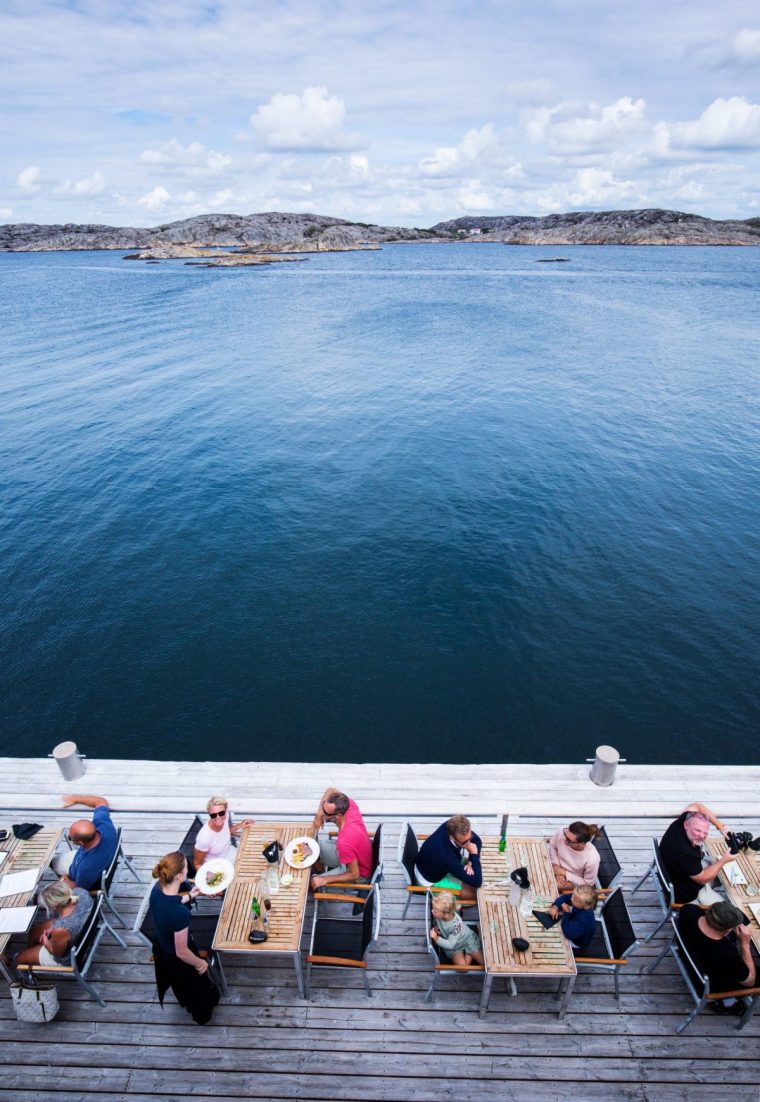 Diners at Salt & Sill (Photo: Roger Borgelid/Westsweden.com)
Diners at Salt & Sill (Photo: Roger Borgelid/Westsweden.com)
Mottling the North Sea on the west coast of Sweden, a few miles north of Gothenburg, the islands of the Bohuslän archipelago are linked by bridges, lending themselves nicely to island-hopping road trips (hire of a manual-gear five-seat car with Europcar at Gothenburg Airport costs from £67 a day). Travelling round-trip from Gothenburg, it is possible to tick off at least four islands in seven days.
Following roads such as the E6, 168 and 160, visitors can stop at destinations such as Marstrand to scale the hilltop Carlsten Fortress, Tjörn for the open-air Pilane sculpture park, and Skafto for Dyrön (via ferry), to stew in its glorious sea-view sauna and hike the cross-island Dynes Ravine.
Flights from London to Gothenburg are cheapest in September, according to Skyscanner, when returns are available for £44 with Ryanair.
A night at the Björholmens Marina hotel in Tjörn, where all rooms have sea views, costs from £169. Other options include the floating Salt & Sill hotel on Klädesholmen, off the coast of Tjörn (from £176) and double hostel rooms at Hav & Logi on Tjörn (from £80 a night in August).
Outer Hebrides, Scotland 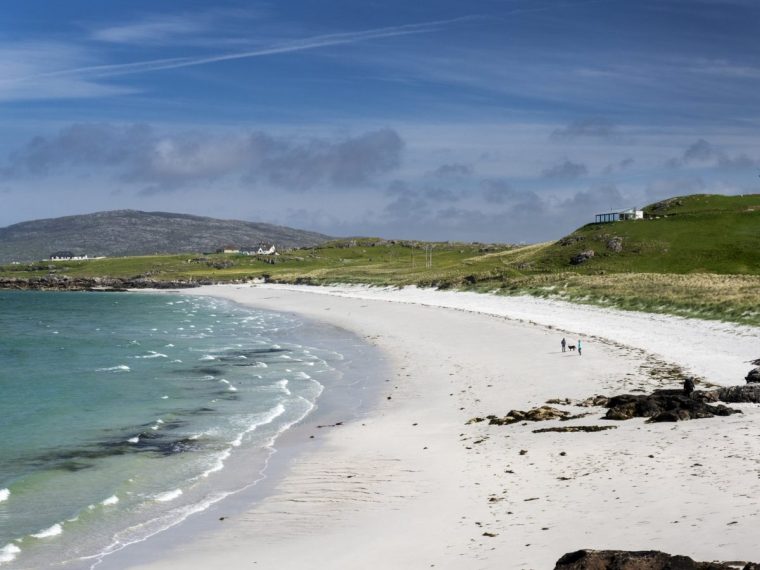 White sands on the west coast of Eriskay (Photo: Ashley Cooper/Getty/Corbis RF Stills)
White sands on the west coast of Eriskay (Photo: Ashley Cooper/Getty/Corbis RF Stills)
Slinking through the Atlantic Ocean, 45 miles off the north-west coast of Scotland, the Outer Hebrides are made up of five main islands, connected by ferry routes and causeways.
Barra, with its island castle and seal-watching spots, is the first stop from mainland Oban. Eriskay, home of rare Eriskay ponies, follows. Then it’s on to a walking trail across tendrilled South Uist and Benbecula – where sea otters can be spotted in A’Chinn loch – before visitors arrive at North Uist, which promises everything from stone circles to sculpture trails. The final island in the chain is Lewis and Harris, best loved for its white-sand beaches, coastal cliffs, and Neolithic sites.
CalMac ferries sail from Oban to Barra’s Castlebay every day between April and October; from Barra to Eriskay five times a day, Monday to Saturday; and from Berneray, North Uist, to Harris, up to five times a day. You will need to hire a car. Rates start from £70 a day at Flit Self Drive (10 minutes’ walk from Oban railway station) or Hazelbank Motors (15 minutes’ walk from the port).
You can also fly with Loganair from Glasgow to Barra – the only commercial airport in the world where planes land on the beach. Doubles at the recently refurbished Temple View hotel on North Uist cost £190 a night.
The Dutch Wadden Islands, Netherlands  Sunset in the North Sea from the island of Ameland (Photo:CreativeNature_nl/Getty)
Sunset in the North Sea from the island of Ameland (Photo:CreativeNature_nl/Getty)
The five Dutch Wadden Islands daisy-chain their way through the North Sea on the north coast of the Netherlands.
On Texel, the largest of the chain, visitors can walk through Duinen van Texel National Park, where the sand dunes resemble a choppy sea and cycle more than 140km of bike trails.
Car-free Vlieland is best known for its seal-watching sites. Terschelling is bundled up in 30km of white-sand beaches and is home to the oldest lighthouse in the Netherlands.
Ameland, known as the Diamond of the Wadden, is flush with nature reserves. The polders, marshes and lakes of Schiermonnikoog, meanwhile, attract 300 different species of birds.
Ferries sail from Den Helder to Texel (€3/£2.60 return), from Harlingen to Vlieland (€34.60/£30 return) and Terschelling (€51.50/£44.70 return), and from Holwert to Ameland (€20.04/£17.70 return) several times a day.
Fletcher Hotel De Cooghen, a 10-minute walk from the dunes on Texel, costs from £75 a night in August.
Šibenik archipelago, Croatia 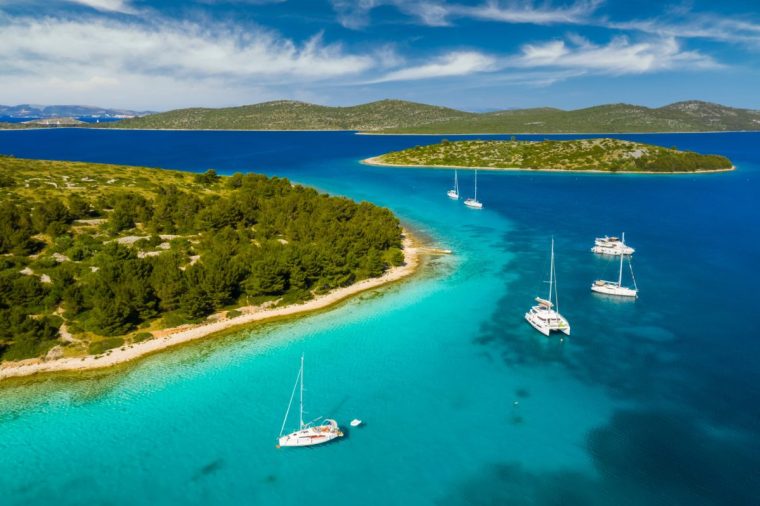 Yachts in Kornati island archipelago Kornati National Park (Photo: Anton Petrus/Getty/Moment RF)
Yachts in Kornati island archipelago Kornati National Park (Photo: Anton Petrus/Getty/Moment RF)
While the city of Split, the gateway to the islands of Hvar, Brac and Vis, has faced claims of overtourism, the Šibenik archipelago, 80km north, has flown much more under the radar.
Šibenik-Knin County attracted around 25,000 British tourists between January and the end of August 2024, while Split-Dalmatia County drew in more than 201,000, according to the Croatian tourism board. For Trip.com, Šibenik archipelago accounts for 2 per cent of UK customers’ stays in Croatia. There are more than 200 islands and islets in this chain, although only six are inhabited. Highlights include Zlarin, with its sailboat-spotted harbour, olive groves, and hideaway coves; and Prvic, where two petite fishing villages of red-roofed limestone buildings and a chain of quiet pebbled beaches await.
The unpeopled national park-protected Kornati Islands, which were said to be made of “god’s tears, stars, and breath” by George Bernard Shaw, are also counted as part of this archipelago.
Jadrolinija ferries sail from Šibenik to Zlarin, Obonjan, Kaprije and Žirje and from Šibenik to Prvic and Vodice daily in summer.
The Azores, Portugal 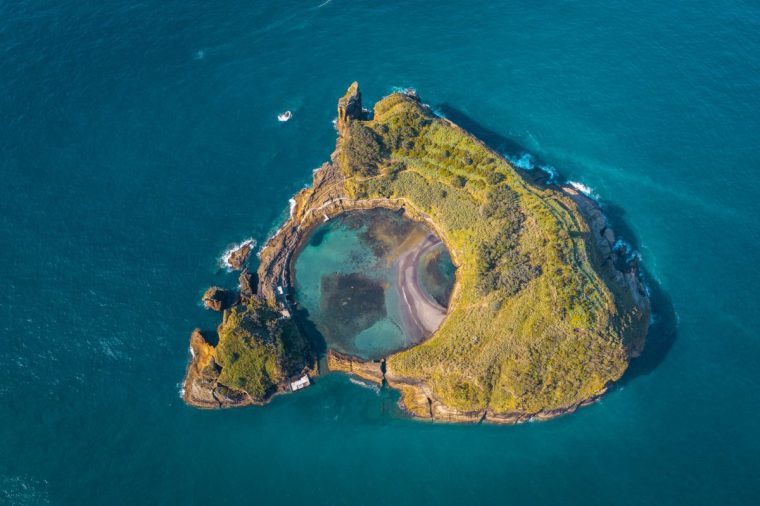 The volcanic Islet of Vila Franca do Campo in the Azores (Photographer: Marco Bottigelli/Getty/Moment RF)
The volcanic Islet of Vila Franca do Campo in the Azores (Photographer: Marco Bottigelli/Getty/Moment RF)
Dubbed the Hawaii of Europe for their volcanic landscapes, the Azores speckle the Atlantic Ocean, more than 870 miles west of Portugal. There are nine major islands in the chain, but they are spread out over 370 miles, so it is not usually practical to see them all in one trip.
Most island-hopping itineraries begin in São Miguel, where there is an international airport, as well as geothermal springs, crater lakes and hiking trails. From here, visitors can fly to Terceira for its Unesco-protected capital, Angra do Heroísmo, and natural swimming pools, before taking the ferry to Graciosa and São George, with its coastal cliffs and lava fields. Four-star hotel stays on these islands start from around £70 per night.
Alternatively, you can board a plane to São George, then ride the ferry to Pico to experience its Unesco-protected wine region. Then carry on to Faial, for caldera hikes and whale-watching.
If the logistics of arranging a trip seem like too much, Walks Worldwide offers an eight-day hot springs and whale-watching trip to São Miguel and Santa Maria from £1,295pp, including return flights from the UK.
Lake Constance, Germany 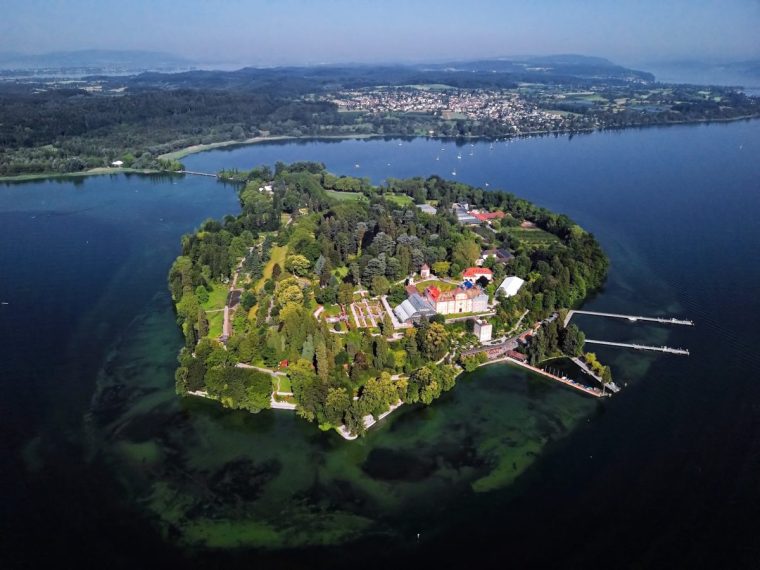 Mainau Island in Lake Constance (Photo: rusm/Getty/E+)
Mainau Island in Lake Constance (Photo: rusm/Getty/E+)
British holidaymakers tend to overlook Germany as a holiday destination. According to the German government, of the 22 million overnight stays in the country last year, just 2 per cent were by visitors from the UK. Its lakes can offer scenic island-hopping break, however.
Sandwiched between the southern edge of Germany and the north-east corner of Switzerland, 207 sq mile Lake Constance (also known as Bodensee), is freckled by three main inhabited islands.
Nicknamed the Flower Island, Mainau is clad in gardens that include a 150-year-old arboretum with giant sequoias, 12,000 rose bushes and one of Germany’s largest butterfly houses.
Reichenau – the Monastic Island – is home to an 8th-century abbey and three churches that are protected by Unesco as exceptional examples of medieval monastic architecture.
Lindau, meanwhile, is occupied by an old town of red-roofed houses and spired churches.
Operating daily from March to October, Lake Constance Shipping’s “White Fleet” ferries connect Mainau, Reichenau and Lindau to several locations around the lake shore. The Bodensee sightseeing card (£67 for three days) includes two days of free passenger ship travel.
Rooms at See Hotel Seeschau in Reichenau are available from £129 in August, while a stay at the 18th-century Hotel Stift, 250m from the lakeshore in Lindau, costs from £93.
